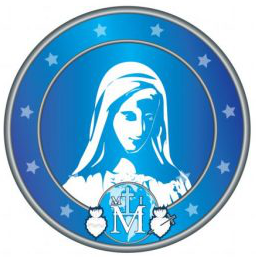Maximillian Kolbe
St. Maximilian Kolbe
St. Maximilian Kolbe was born in Poland in 1894 and at about the age of 10 had a vision of the Virgin Mary. She offered him a white crown and a red crown, representing purity and martyrdom. He chose both, a foreshadowing of his life to come. In 1910, he joined the Conventual Franciscan Order. He was sent to study in Rome where founded the M.I. on October 16, 1917. Ordained a priest in 1918, Father Maximilian returned to Poland and began his untiring missionary activity, starting a monthly magazine and establishing two evangelization centers dedicated to the Immaculate Virgin: Niepokalanów, the “City of the Immaculata,” in Poland, and Mugenzai no Sono in Japan, and envisioned missionary centers worldwide. To better “win the world for Christ through the Immaculata,” the friars utilized the most modern techniques. St. Maximilian used short-wave radio and planned to build a motion picture studio. In 1939, during WWII, at Niepokalanów he welcomed thousands of refugees, especially Jews. In 1941, St. Maximilian was arrested by the Nazis and taken to the Auschwitz concentration camp. There he offered his life for another prisoner and was condemned to slow death in a starvation bunker. He died on August 14, 1941, with an injection of carbolic acid. Pope John Paul II canonized him as a Saint and Martyr of Charity on October 10, 1982. St. Maximilian Kolbe is considered a patron of journalists, families, prisoners, the pro-life movement, the chemically addicted and those with eating disorders.
St. Maximilian was a ground-breaking theologian. His insights on the Immaculate Conception anticipated the Marian theology of the Second Vatican Council and further developed the Church’s understanding of Mary’s role in God’s Plan of salvation. His Marian thought re-echoes in the Marian teaching of both St. John Paul II and Benedict XVI.
